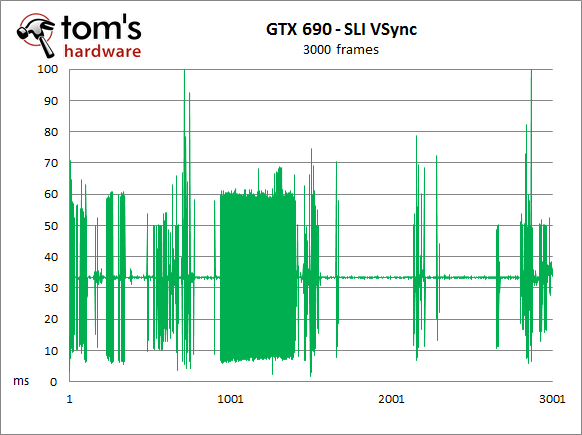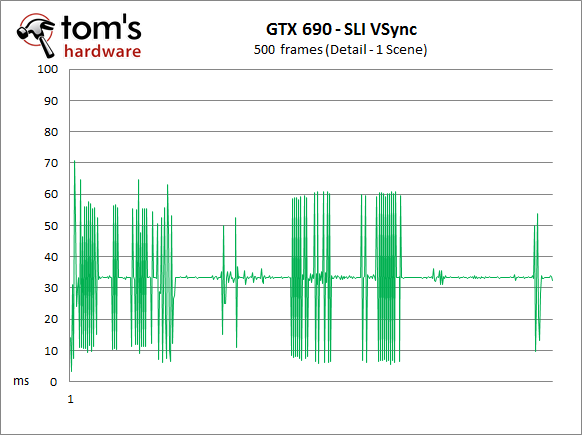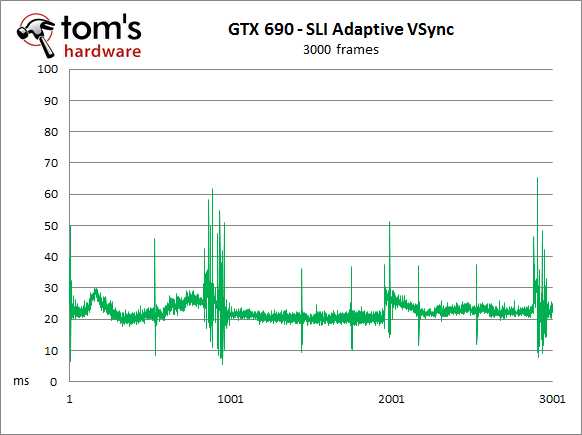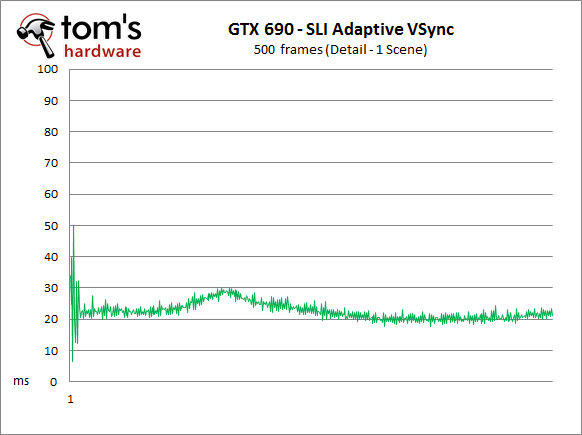Radeon HD 7990 And GeForce GTX 690: Bring Out The Big Guns
EVGA recently lent our German lab one of the GeForce GTX 690s we've had in the U.S. for months. The purpose? To pit against HIS' upcoming 7970 X2 and PowerColor's Devil13 HD7990, both dual-Tahiti boards vying to become the world's fastest graphics card.
Micro-Stuttering: Adaptive VSync (Nvidia)
Normal and Adaptive VSync with EVGA's GeForce GTX 690
Let's first have a look at performance with vertical synchronization enabled. As we can see in the chart below, the driver tries to sync the frame rate to the monitor's refresh.
Nvidia also offers Adaptive VSync as an option in its driver. From our launch coverage of the GeForce GTX 680 (GeForce GTX 680 2 GB Review: Kepler Sends Tahiti On Vacation):
Nvidia’s solution to the pitfalls of running with v-sync on or off is called Adaptive VSync. Basically, any time your card pushes more than 60 FPS, v-sync remains enabled. When the frame rate drops below that barrier, v-sync is turned off to prevent stuttering. The 300.99 driver provided with press boards enables Adaptive VSync through a drop-down menu that also contains settings for turning v-sync on or off.
Nvidia's Adaptive VSync feature works well. In light of this, AMD really has some work to do. The thing is, there's a freeware tool out there able to achieve a comparable (or better) reduction in micro-stuttering. We're going to give that a shot on the next page.
Get Tom's Hardware's best news and in-depth reviews, straight to your inbox.
Current page: Micro-Stuttering: Adaptive VSync (Nvidia)
Prev Page Micro-Stuttering: Alternate Frame Rendering (AMD) Next Page Micro-Stuttering: Dynamic V-Sync (AMD)
Igor Wallossek wrote a wide variety of hardware articles for Tom's Hardware, with a strong focus on technical analysis and in-depth reviews. His contributions have spanned a broad spectrum of PC components, including GPUs, CPUs, workstations, and PC builds. His insightful articles provide readers with detailed knowledge to make informed decisions in the ever-evolving tech landscape



